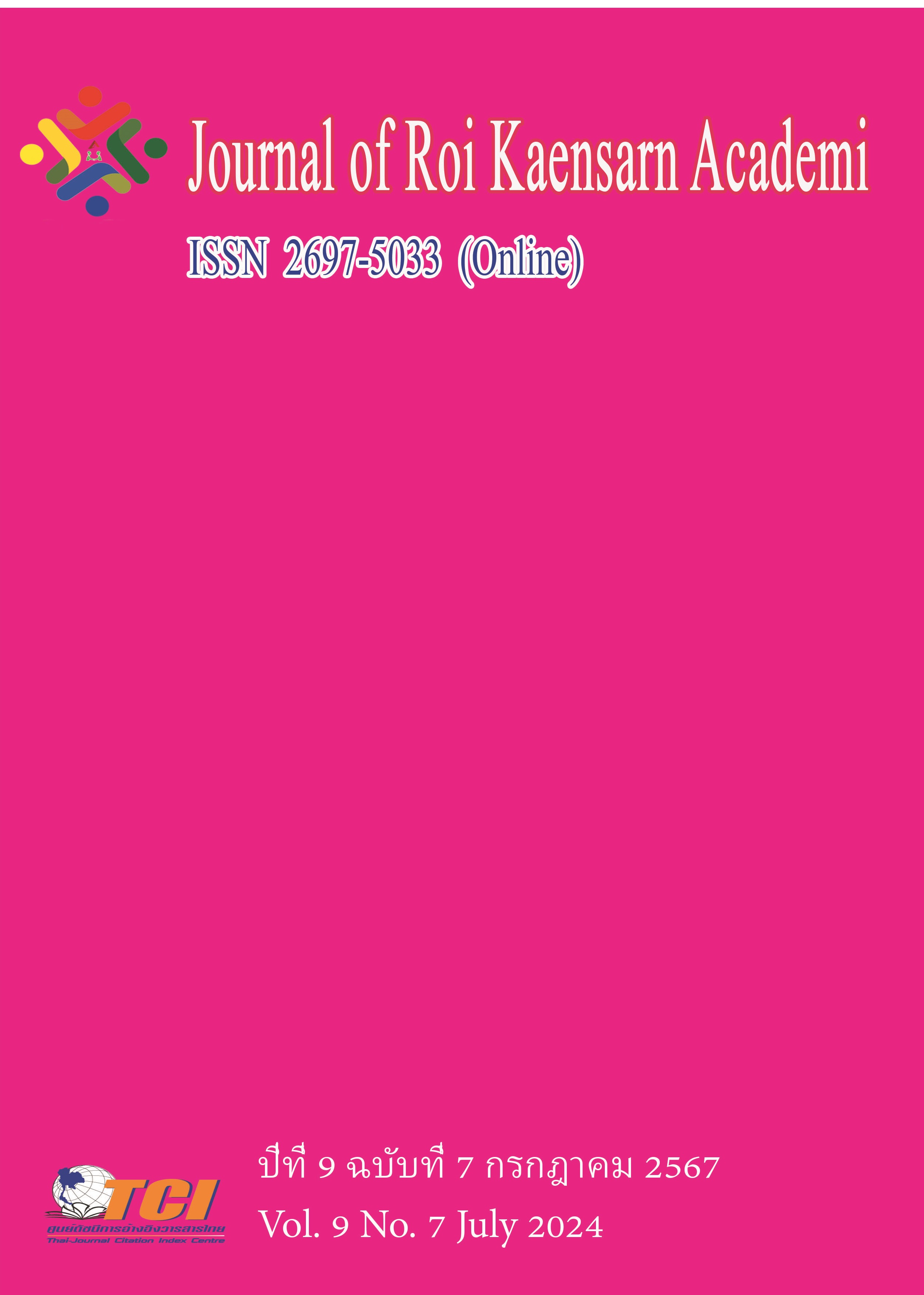The Curriculum Administration Model Under the "1+X" Certificate System in Nanning Higher Vocational College of Guangxi Province in People's Republic of China
Main Article Content
บทคัดย่อ
This research article were to 1) study the current states of curriculum administration under the “1+X” certificate system in Higher Vocational College, 2) develop the curriculum administration model under the “1+X” certificate system and 3) evaluate the curriculum administration model under the “1+X” certificate system. The research processes were divided into three phases. Phase 1: collected the data by using questionnaire with 50 school administrators and 215 teachers. Phase 2: proceeded a semi-structured interview with 11 experts in the curriculum. Phase 3: 10 experts used model evaluation form evaluated the accuracy, propriety, feasibility and utility of the model.
The research findings indicated that: 1) The overall and each aspect of the current states of curriculum administration under the “1+X” certificate system was at a moderate mean score. 2) The development of curriculum administration model under the “1+X” certificate system shown four aspects: teaching content, teaching staff, teaching methods and Integration of curriculum and certificates. 3) The evaluation found that in overall, the accuracy and propriety were at the high level, while the feasibility and utility were at the highest level. Furthermore, the accuracy, the propriety, the feasibility and the utility of the manual for the model in overall were at the highest level.
Article Details
เอกสารอ้างอิง
Dai, L. Cheng, G., Liu, D., Qu, J. (2021). Talent Training Model Integrating Production and Education in Higher Vocational Colleges under the “1+X” Certificate System: Inherent Similarities, Realistic Dilemmas and Elimination Paths. Experimental Technology and Management. 38 (11), 247-253, 281.
Gong, W. (2017). Research on the “Double Certificate” Curriculum Mode of Vocational Education in the “Docking” Perspective (Doctoral Dissertation). Republic of China : Tianjin University.
Krejcie, R. V., & Morgan, D. W. (1970). Determining Sample Size for Research Activities. Educational and Psychological Measurement. 30 (3), 607–610.
Madaus, G. F., Scriven, M.S. & Stufflebeam, D. L. (2000). Evaluation Models Viewpoints on Education and Human Services Evaluation. Boston : Khunver - Nijhoft.
Mao, S., & Li, Z. (2021). Problems and Countermeasures of Course-Certificate Integration in Higher Vocational Colleges under the 1+X Certificate System. Vocational Education Forum. (12), 47-51.
Qi, H., & Dong, Y. (2015). Reflections on Constructing China’s Modern Vocational Education Curriculum Connection System by Drawing on New Zealand’s Experience. Journal of Qingdao Vocational and Technical College. (04), 66-69.
Ren, Q. (2022). Analysis on the Construction Path of Teaching Staff in Higher Vocational Colleges. Journal of Liaoning Radio and Television University. (2), 59-61.
Tang, Y. (2019). The 1+X Certificate System: Innovation in Vocational Education System Design in the New Era. Chinese Vocational and Technical Education. (16), 5-11.
The State Council of the People's Republic of China. (2010). National Medium and Long-term Education Reform and Development Plan Outline (2010-2020). Online. Retrieved July 1, 2023. from : https://www.gov.cn/jrzg/2010-07/29/content_1667143.htm.
The State Council of the People's Republic of China. (2014). Decision of the State Council on Accelerating the Development of Modern Vocational Education. Online. Retrieved July 1, 2023. from : https://www.gov.cn/ zhengce/content/2014-06/22/content_8901. htm.
The State Council of the People's Republic of China. (2019). Notice of the State Council on Issuing the National Vocational Education Reform Implementation Plan. Online. Retrieved from :https://www.gov.cn/gongbao/content/2019/content_5368517.htm.
Yang, Y., Liu, Z., & Jia, H. (2023). The Teaching Reform Practice of Integrating “1+X” Certificate in Mechanical Design, Manufacturing and Automation Majors. Equipment Manufacturing Technology. (5), 216-219.
Zhang, G. (2022). Value Implications, Realistic Dilemmas, and Optimization Strategies of the 1+X Certificate System: From the Perspective of “Three Orientations” of Vocational Education. China Higher Education Research. (04), 103-108.
Zhang, H. (2022). Exploration on the Implementation Strategy of “Course-Certificate Integration” for Foreign Business and Trade Major Group in Higher Vocational Colleges Based on 1+X Certificate. The Economist. (9), 209-210.
Zhang, H., & Zhao, W. (2023). Analysis of Trends in Vocational Education Teaching Reform in the New Era - Content Analysis Based on the 2022 Recommendation of Some Provinces to Participate in the National Teaching Achievement Award Publicity Project. Vocational Education Research. (7), 61-66.
Zhang, X. (2021). Innovative Value, Normative Dimension, and Adjustment Strategies for Higher Vocational Colleges to Implement the 1+X Certificate System. Education and Occupation. (05), 5-11.
Zhou, F., & Deng, W. (2023). The Main Contents, Highlights and Future Reform Priorities of Vocational Education Evaluation Research and Practice – Analysis of the Winning Results of the 2022 Vocational Education National Teaching Achievement Award on the Theme of “Evaluation Reform”. China Vocational and Technical Education. (27), 3-8.

